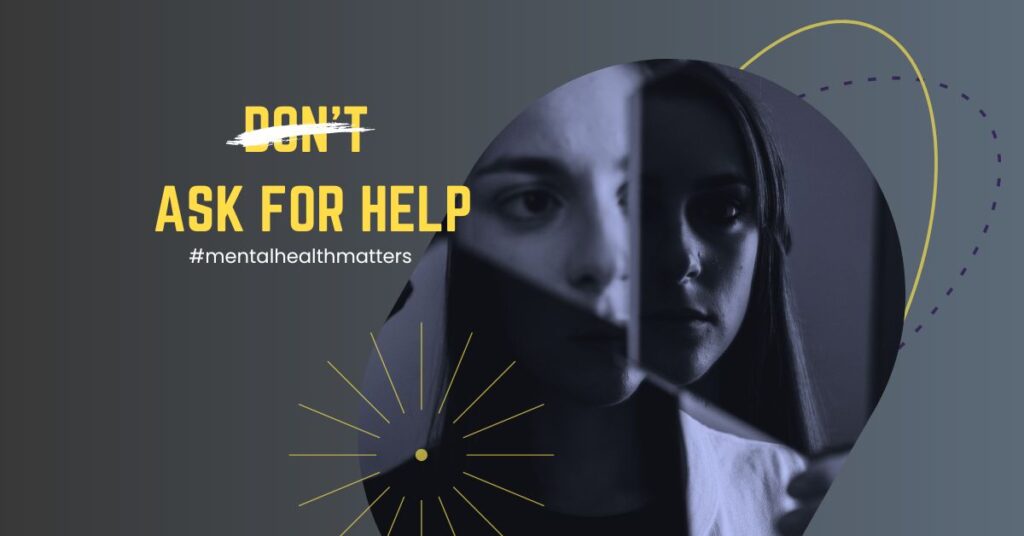Depression or Depressive disorders

What is Depression?
Depression or Depressive disorders, a complex spectrum of mental health conditions, cast a shadow over the lives of millions worldwide. Characterized by persistent feelings of sadness, hopelessness, and a profound lack of interest or pleasure in daily activities, these conditions are far more than momentary bouts of melancholy.
This article delves into the diagnostic criteria of depressive disorders, offering an in-depth exploration of the key parameters utilized by mental health professionals to identify and address these challenging conditions. By unravelling the criteria that underpin these disorders, we aim to foster understanding, dispel stigma, and provide insight into the intricate landscape of depressive disorders.
Depression, often referred to as major depressive disorder (MDD), is a pervasive mental health condition characterized by persistent feelings of sadness, hopelessness, and a lack of interest or pleasure in activities. It affects a person’s thoughts, emotions, and physical well-being, leading to profound disruptions in daily life.
Differentiating Between Sadness and Depression:
While sadness is a common human emotion, depression extends beyond temporary feelings of unhappiness. Clinical depression involves persistent low mood, loss of interest in once-enjoyed activities, changes in appetite or sleep patterns, fatigue, and feelings of worthlessness or guilt. These symptoms often endure for weeks, months, or even years, significantly impairing a person’s ability to function.
Common Signs and Symptoms of Depression:
Depression manifests through a range of symptoms, including persistent sadness, changes in appetite and sleep patterns, irritability, fatigue, difficulty concentrating, feelings of guilt or worthlessness, and thoughts of death or suicide. Physical symptoms such as headaches and digestive issues can also accompany depression, further impacting a person’s quality of life.
Diagnostic Criteria for Depressive Disorders: A Comprehensive Overview
Depressive disorders, encompassing major depressive disorder (MDD), persistent depressive disorder (formerly known as dysthymia), and other specified and unspecified depressive disorders, are mental health conditions characterized by persistent feelings of sadness, hopelessness, and a lack of interest or pleasure in most activities. The diagnostic criteria for depressive disorders, according to the DSM-5 (Diagnostic and Statistical Manual of Mental Disorders, Fifth Edition), are as follows:
1. Major Depressive Disorder (MDD): To be diagnosed with MDD, an individual must exhibit a persistent low mood or loss of interest or pleasure in activities (anhedonia) for at least two weeks. Additionally, the presence of at least five of the following symptoms during the same two-week period, representing a change from previous functioning, is necessary. These symptoms include:
- Depressed mood most of the day, nearly every day, as indicated by subjective report or observation by others.
- Markedly diminished interest or pleasure in all or almost all activities most of the day, nearly every day.
- Significant weight loss or gain without dieting, or a decrease or increase in appetite.
- Insomnia or hypersomnia nearly every day.
- Psychomotor agitation or retardation nearly every day.
- Fatigue or loss of energy nearly every day.
- Feelings of worthlessness or excessive or inappropriate guilt.
- Diminished ability to think or concentrate, or indecisiveness.
- Recurrent thoughts of death, suicidal ideation without a specific plan, or a suicide attempt or a specific plan for committing suicide.
2. Persistent Depressive Disorder (Dysthymia): Persistent depressive disorder is diagnosed when an individual experiences a depressed mood for most of the day, for more days than not, for at least two years (or one year for children and adolescents). Additionally, the presence of at least two of the following symptoms is required:
- Poor appetite or overeating.
- Insomnia or hypersomnia.
- Low energy or fatigue.
- Low self-esteem.
- Poor concentration or difficulty making decisions.
- Feelings of hopelessness.
3. Other Specified and Unspecified Depressive Disorders: These categories are used when the symptoms do not meet the criteria for MDD or persistent depressive disorder but still cause significant distress or impairment in daily functioning.
It is essential to note that depressive disorders can coexist with other mental health conditions, such as anxiety disorders, substance use disorders, or medical conditions, making a comprehensive evaluation by a qualified mental health professional crucial for accurate diagnosis and appropriate treatment planning.
Diagnosing Depression
Diagnosing depression is a meticulous process that requires a thorough evaluation by qualified mental health professionals. Here’s an overview of the diagnostic process for depression:
Clinical Interview:
The initial step involves a detailed clinical interview. Mental health professionals engage in a conversation with the individual, exploring their feelings, thoughts, behaviors, and physical symptoms. This conversation provides valuable subjective information about the individual’s emotional state and the duration and intensity of their symptoms.
Psychological assessments play a vital role in diagnosing depression. Standardized tests and questionnaires are administered to assess the severity of depressive symptoms. These assessments help quantify the individual’s emotional state, providing a quantitative perspective to complement the qualitative data obtained during the clinical interview.
Medical and Family History:
A comprehensive understanding of the individual’s medical history and family background is crucial. Certain medical conditions, medications, or a family history of depression can contribute to the development of depressive symptoms. Gathering this information provides context and helps rule out potential medical causes.
Differential Diagnosis:
Differential diagnosis is essential to distinguish depression from other medical or psychological conditions with similar symptoms. Conditions such as bipolar disorder, certain personality disorders, and medical issues like thyroid disorders can present with depressive symptoms. Careful consideration and analysis ensure an accurate diagnosis.
Behavioural Observations:
Observing the individual’s behaviour, mood fluctuations, and social interactions in different settings are integral parts of the diagnostic process. Behavioural observations provide valuable insights into the individual’s daily functioning, energy levels, and social withdrawal, contributing to the diagnostic evaluation.
Treatment Approaches for Depression:
- Psychotherapy (Talk Therapy): Various forms of psychotherapy, including Cognitive Behavioural Therapy (CBT), Interpersonal Therapy (IPT), and Psychodynamic Therapy, are effective in treating depression. These therapies help individuals identify and change negative thought patterns, manage emotions, and improve communication skills.
- Medications: Antidepressant medications, such as Selective Serotonin Reuptake Inhibitors (SSRIs) and Serotonin-Norepinephrine Reuptake Inhibitors (SNRIs), can help regulate brain chemicals associated with mood. It’s essential to work closely with a healthcare provider to find the right medication and dosage.
- Exercise and Physical Activity: Regular physical activity has been shown to improve mood by increasing the production of endorphins, the body’s natural stress relievers. Exercise can be as effective as medication in reducing symptoms of depression.
- Mindfulness and Relaxation Techniques: Practices such as meditation, yoga, and deep breathing exercises can help individuals manage stress, reduce anxiety, and improve overall well-being. Mindfulness-based therapies, like Mindfulness-Based Stress Reduction (MBSR), are particularly effective.
- Nutrition and Sleep Management: Maintaining a balanced diet and ensuring adequate sleep are crucial for mental health. Nutrient-rich foods and a consistent sleep schedule can positively impact mood and energy levels.
- Support Groups: Joining support groups or therapy groups where individuals can share experiences and coping strategies can provide a sense of belonging and reduce feelings of isolation.
Social and Family Support for Individuals with Depression:
- Active Listening: Friends and family members can provide emotional support by actively listening without judgment. Offering a non-critical, empathetic ear can be incredibly reassuring for someone struggling with depression.
- Encouragement for Treatment: Encouraging the individual to seek professional help and supporting them in attending therapy sessions can be immensely helpful. Assisting with scheduling appointments or providing transportation, if needed, demonstrates support.
- Promoting Routine and Social Activities: Encouraging the individual to maintain a daily routine and participate in social activities, even if they feel reluctant, can combat isolation and improve mood. Gentle encouragement to engage in hobbies or outings can make a significant difference.
- Reducing Stressors: Friends and family can help by identifying and minimizing stressors in the individual’s life. This might involve assisting with tasks, organizing responsibilities, or creating a calm and supportive home environment.
- Educating Themselves: Loved ones can educate themselves about depression, enhancing their understanding of the condition and reducing misconceptions. This knowledge can foster a more supportive and empathetic atmosphere.
- Avoiding Stigma: Avoiding judgment and stigmatization is vital. Individuals with depression may already battle feelings of shame or guilt; a supportive and accepting environment can counteract these negative emotions.
- Encouraging Self-Care: Promoting self-care activities, such as exercise, healthy eating, and relaxation techniques, can be facilitated through joint participation. Encouraging these activities as a family or social group can make them more enjoyable and effective.
Depression is a challenging condition, but with the right treatment, understanding, and support from friends and family, individuals can navigate their way towards recovery and a better quality of life.
Misconceptions about Depression:
- “Depression Is Just Extreme Sadness”: Depression involves a complex interplay of genetic, biological, environmental, and psychological factors. It’s a clinical condition that extends far beyond occasional feelings of sadness.
- “People with Depression Just Need to Cheer Up”: Depression is not a result of a lack of effort or willpower. It’s a medical condition that often requires professional treatment, including therapy and, in some cases, medication.
- “Depression Only Affects Emotions”: Depression affects not only emotions but also physical health, cognition, and behavior. It can lead to chronic medical conditions and significantly impair overall well-being.
- “Depression Is a Sign of Weakness”: Depression is not a weakness; it’s a medical illness. People from all walks of life, regardless of strength or character, can experience depression.
Coexisting Disorders or Conditions with Depression:
- Anxiety Disorders: Depression commonly coexists with various anxiety disorders, intensifying the emotional and cognitive challenges faced by individuals.
- Substance Use Disorders: Individuals struggling with substance abuse often experience depression, leading to a complex dual diagnosis that requires specialized treatment.
- Chronic Medical Conditions: Conditions like diabetes, heart disease, and chronic pain can exacerbate depression symptoms, creating a challenging interplay between physical and mental health.
The diagnostic criteria for depressive disorders are not just clinical definitions but pathways to empathetic care and support. These criteria, as outlined in the DSM-5, guide mental health professionals in their quest to help individuals find solace and recovery. By recognizing the symptoms, understanding the complexities, and embracing the nuances of these conditions, society can better support those bearing the weight of depressive disorders. With accurate diagnosis and targeted treatment, individuals battling depression can journey towards healing, resilience, and the promise of brighter days ahead.
Written By –
Ms. Sabeera Nowreen
Psychologist




